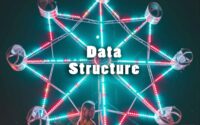Mock Test on Computer Science and Engineering
Interested users can download the Mock Test on Computer Science and Engineering from the links enclosed below. Download the Last 5 Years Mock Test on Computer Science and Engineering Solved along with the Answers of each question.

This Mock Test on Computer Science and Engineering may vary from the Actual paper. Use the Mock Test on Computer Science and Engineering as a reference for the exam preparation. Check the Mock Test on Computer Science and Engineering from this page.
At the bottom of this page, you will find ‘Click here links’ for downloading the Mock Test on Computer Science and Engineering. Click on the required link & download your related Mock Test on Computer Science and Engineering to make as a reference for your scheduled preparation.
Computer Science and Engineering Mock Test
1. The goal of resizing the sender and receiver window is
(a) To ensure security
(b) To ensure congestion control
(c) To endure parity bit
(d) None of these
2. Hamming codes can correct
(a) Single error
(b) Multiple error
(c) Both a and b
(d) None of these
3. In order for the boundary between two frames to be unambiguously recognized by the flag patter, which of the following method is used.
(a) Aloha
(b) Bit stuffing
(c) Loop
(d) All of these
4. How does CSMA/CD react to collisions?
(a) All systems jam the network, and then all begin transmitting again.
(b) Hosts involved in a collision send an RTS signal indicating a time frame in which to retransmit.
(c) Hosts involved in the collision send a jam signal, and then run an algorithm before retransmitting.
(d) Collisions do not occur on CSMA/CD.
5. In Vertical redundancy check (parity check)
(a) Only 1 bit is used for error detection
(b) 2 bits are used for error detection
(c) 3 bits are used for error detection
(d) None of these
6. In _________ ARQ, only the specific damaged or lost frame is retransmitted.
(a) Selective-Reject
(b) Go-Back-n
(c) Piggy bagging
(d) All of these
7. Devices on one network can communicate with devices on another network via a …….
(a) File Server
(b) Utility Server
(c) Printer Server
(d) Gateway
8. Which of the following are the channels defined by ISDN.
(a) Bearer, Data and Hybrid.
(b) Bearer, Data and Mesh.
(c) Bearer, Bit and Mesh.
(d) Baud, Bit and Hybrid.
9. Considering data transmission in terms of baud rate and bit rate, which of the following is true?
(a) Bit rate is less than or equal to baud rate.
(b) Bit rate is always equal to baud rate.
(c) Baud rate is less than or equal to bit rate.
(d) Baud rate is always greater than bit rate.
10. Porting the software to work in a new environment refers to
(a) Adaptive maintenance
(b) Corrective maintenance
(c) Testing
(d) All of these
11. Planning a project over a number of stages that prevent from making big commitment too early is called
(a) Effort planning
(b) Sliding window planning
(c) Cost planning
(d) Product planning
12. COCOMO classified any software development project into _______ categories based on the development complexity.
(a) 2
(b) 3
(c) 4
(d) 5
13. Which of the following is the process of determining whether the output of one phase of software development conforms to that of its previous phase?
(a) Validation
(b) Verification
(c) Identification
(d) None of these
14. Good software design should possess
(a) Understandability
(b) Maintainability
(c) Both a and b
(d) None of these
15. Specify what the system should do and refrain from stating how to do.
(a) White-box view
(b) Black-box view
(c) Conceptual integrity
(d) None of these
16. The requirement gathering and analyze customer requirement is the responsibility of
(a) System analyst
(b) Administrator
(c) Chief manager
(d) Low level manager
17. In a _______ team, there is no formal team hierarchy.
(a) Chief programmer
(b) Democratic
(c) Mixed control
(d) All of these
18. The primary advantage of adhering to a life cycle model is
(a) It encourages development in systematic and disciplined manner
(b) It encourages development in transparent way.
(c) It offers good testing strategy.
(d) It offers good communication skill.
19. A documented life cycle model prevents
(a) Misinterpretation
(b) Inconsistencies
(c) Omission
(d) All of these
20. The SRS document is written using
(a) End-user terminology
(b) Technical terminology
(c) Analysis terminology
(d) None of these
21. The principle of detecting errors as close to their points of introduction as possible is known as
(a) Phase containment of error
(b) Self containment of error
(c) Beta testing
(d) Alpha testing
22. Instead of making a single estimate for each task, three estimates i.e pessimistic, likely and optimistic estimates are made in ________
(a) Gantt charts
(b) PERT charts
(c) Critical charts
(d) Task charts
23. In __________ testing, each component of a composite conditional expression assumes both true and false values.
(a) Branch coverage
(b) Condition coverage
(c) Path coverage
(d) Control flow
24. In software design, a module having high _______ and low ________ is said to be functionally independent of other modules.
(a) Cohesion, coupling
(b) Coupling, cohesion
(c) Temporal, communicational
(d) Logical, sequential
25. The number of interchanges required to sort 5, 1, 6, 2, 4 in ascending order using Bubble Sort is
(a) 6
(b) 5
(c) 7
(d) 8
More Question Set on Computer Science and Engineering
| Model Question | Old Question |
| Sample Papers | Mock Test |
| Practice Set | Question Bank |
| Important Questions | Test Papers |
| Typical Questions | Selected Questions |
26. A linear list of elements in which deletion can be done from one end (front) and insertion can take place only at the other end (rear) is known as a
(a) Queue
(b) Stack
(c) Tree
(d) linked list
27. A full binary tree with n leaves contains
(a) n nodes
(b) Log2n nodes
(c) 2n –1 nodes
(d) 2n nodes
28. An undirected graph G with n vertices and e edges is represented by adjacency list. What is the time required to generate all the connected components?
(a) O (n)
(b) O (e)
(c) O (e+n)
(d) O (e2)
29. What is the postfix form of the following prefix *+ab–cd
(a) ab+cd–*
(b) abc+*–
(c) ab+*cd–
(d) ab+c*d–
30. Which data structure is needed to convert infix notation to postfix notation?
(a) Branch
(b) Queue
(c) Tree
(d) Stack
31. The extra key inserted at the end of the array is called a _____
(a) End key
(b) Stop key
(c) Sentinel
(d) Transposition
32. In order to get the contents of a Binary search tree in ascending order, one has to traverse it in
(a) pre-order
(b) in-order
(c) post order
(d) None of these
33. How do you determine the cost of a spanning tree?
(a) By the sum of the costs of the edges of the tree
(b) By the sum of the costs of the edges and vertices of the tree
(c) By the sum of the costs of the vertices of the tree
(d) By the sum of the costs of the edges of the graph
34. In analysis of algorithm, approximate relationship between the size of the job and the amount of work required to do is expressed by using _________
(a) Central tendency
(b) Differential equation
(c) Order of execution
(d) Order of magnitude
35. For the quick sort algorithm, what is the time complexity of the best/worst case?
(a) best case: O(n) worst case: O(n*n)
(b) best case: O(n) worst case: O(n*log(n))
(c) best case: O(n*log(n)) worst case: O(n*log(n))
(d) best case: O(n*log(n)) worst case: O(n*n)
36. O(1) means computing time is __________________
(a) Constant
(b) Quadratic
(c) Linear
(d) Cubic
37. Finding the max element in an unordered stack would require
(a) O(1) operations
(b) O(log n) operations
(c) O(n) operations
(d) None of these
38. Which of the following algorithm is used for data compression?
(a) Pivot
(b) Huffman
(c) Sparse matrices
(d) Hashing
39. Which method of traversal does not use stack to hold nodes that are waiting to be processed?
(a) Dept-first
(b) D-search
(c) Breadth-first
(d) Back-tracking
40. To avoid race condition, the number of processes that may be simultaneously inside their critical condition is:
(a) 0
(b) 1
(c) 2
(d) 4
41. Program ‘preemption’ is
(a) forced de allocation of the CPU from a program which is executing on the CPU.
(b) release of CPU by the program after completing its task.
(c) forced allotment of CPU by a program to itself.
(d) a program terminating itself due to detection of an error.
42. Which scheduling policy is most suitable for a time-shared operating system
(a) Shortest-job First
(b) Elevator
(c) Round-Robin
(d) First-Come-First-Serve
43. Which of the following is not a key piece of information, stored in single page table entry, assuming pure paging and virtual memory
(a) Frame number
(b) A bit indicating whether the page is in physical memory or on the disk
(c) A reference for the disk block that stores the page
(d) None of these
44. Which amongst the following is not a valid page replacement policy?
(a) LRU policy (Least Recently Used)
(b) FIFO policy (First in first out)
(c) RU policy (Recurrently used)
(d) Optimal page replacement policy
45. A set of techniques that allow to execute a program which is not entirely in memory is known as
(a) demand paging
(b) virtual memory
(c) auxiliary memory
(d) secondary memory
46. The total time to prepare a disk drive mechanism for a block of data to be read from is its__________
(a) Latency
(b) latency plus transmission time
(c) latency plus seek time
(d) latency plus seek time plus transmission time
47. The Banker’s Algorithm is an example of a technique for:
(a) deadlock prevention
(b) deadlock avoidance
(c) deadlock detection
(d) deadlock recovery
48. Process is ……………………
(a) A program in execution
(b) An instance of a program running on a computer
(c) The entity that can be assigned to and executed
(d) All of these
49. …………….. is the ability of multiple process to co-ordinate their activities by exchange of information
(a) Synchronization
(b) Mutual Exclusion
(c) Dead lock
(d) Starvation
50. A direct method of deadlock prevention is to prevent the occurrence of …………..
(a) Mutual exclusion
(b) Hold and wait
(c) Circular waits
(d) No preemption



